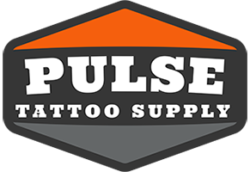
How do I adjust spring tension? This is a hundred year old question, and I can tell you how we go about it, but the answer is – There is no real formula. Springing a machine is just like tattooing, I can tell you what to do, but until you have done it a thousand times you just can’t understand it. Also, I have done it a thousand, thousand times and I still have bad days when I just can’t get it dialed in. This is the great mystery of the dual coil reciprocating tattoo machine. I have seen beautiful machines with excellent geometery that you just can’t seem to get the right tension to make the machine hum, just as many times as I have seen a junker run like a top. It’s a mystery but we have taken some of the guess work out of it with our tattoo machines.

One of the things that makes our machines unique is the back deck design. The spring sits in the frame, not on the frame, this feature makes adding or removing tension a breeze.

As you can see in the illustration above, the rear deck is channelled out so the spring seats itself into the back deck. This eliminates the concern about side to side alignment, if your a-bar spring rig is straight, it will stay so once you mount it into the rear deck.

The next thing I do is line up our a-bar with our Pulse alignment tool. Now everything is where it needs to be alignment wise. I lock down the rear deck clamp and then I run a sharpie line right across the spring where the deck clamp ends. This is going to help me re-align everything quickly and put my spring back at the correct tension point.

I then loosen the deck screw and slide out the spring / a-bar assembly and swap it to the rear of the deck as illustrated above.

I align the sharpie line with the rear deck clamp, so the line is exposed, just like when it was seated in front. This now gives us a mimic of when it was seated forward, but gives us the headroom to bend the spring without hitting the binder or the coils.

Pressing the spring up adds rear spring tension, pressing it down takes it away. That is all I can tell you. I can’t tell you how much or how far or how long. That seems to be the mystery part where you are going to have to put the work in. I can tell you my spring tension is 2mm -3mm in thumb travel, or I could have a tension gauge tell me how many pounds of tension are on my 20 guage spring, but it doesn’t insure your machine will run right. This is the tinkering part, the more time you put in the more you learn. This is a great place to experiment with adding tension, and trying different spring combos. Once you get into dialing in your gap (throw) and your contact screw, your front spring, your deck angle, the voltage you are running at, the needle group, your elastics and a dozen other factors come into play, everything will impact the tune.
There is no recipe. This is one of the elements that separates great machine builders from good machine builders. The more time in on the bench the better you will get at this. This is why old timers used to put contact point on their springs. When someone like Paul Rogers would roll through town and spring you machines you wanted them to last as long as possible. So by putting that contact point on your spring, it added extra life to that spring. Not running capacitors back in the day would help burn a hole through your front spring quick. So that is the truth of it. Put the time in.

I slide the spring back to it’s front position, line up the sharpie line and lock it down. Now I have my spring tensioned and seated at the right stress point. When you tension a spring too much and keep bending it up and down trying to dial it in, the tension point is also where it will shear off and break. Keep a few back up rear springs when playing with tension. Don’t get frustrated, it takes time and even after years I can put too much or too little tension on springs. But when I get it right and the a-bar has that slow motion flutter to it, that machine is going to run great for a long time.


